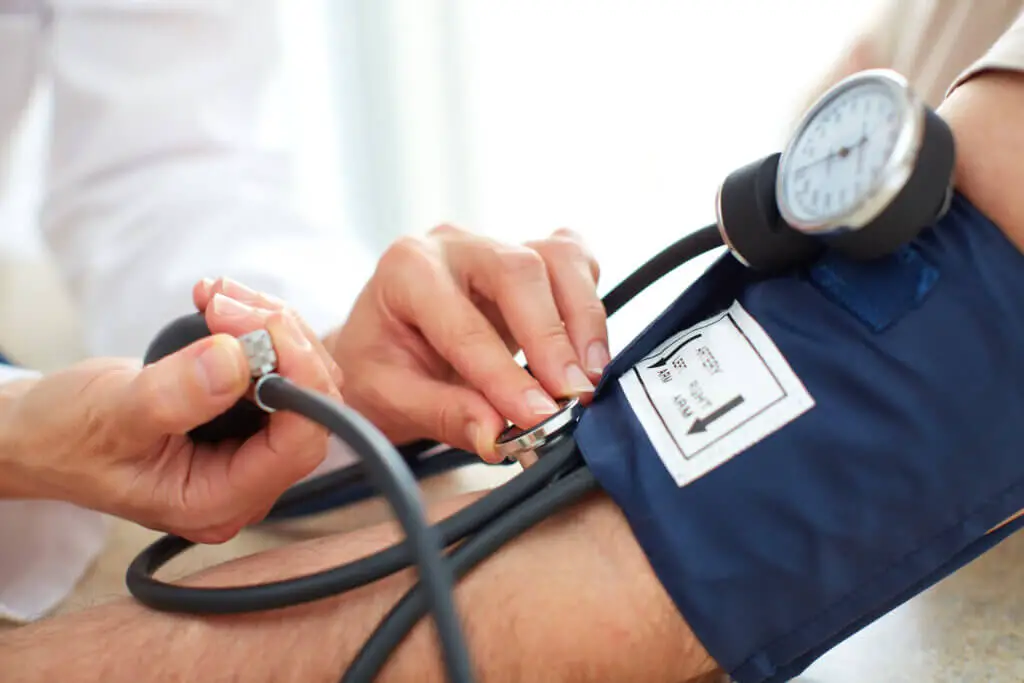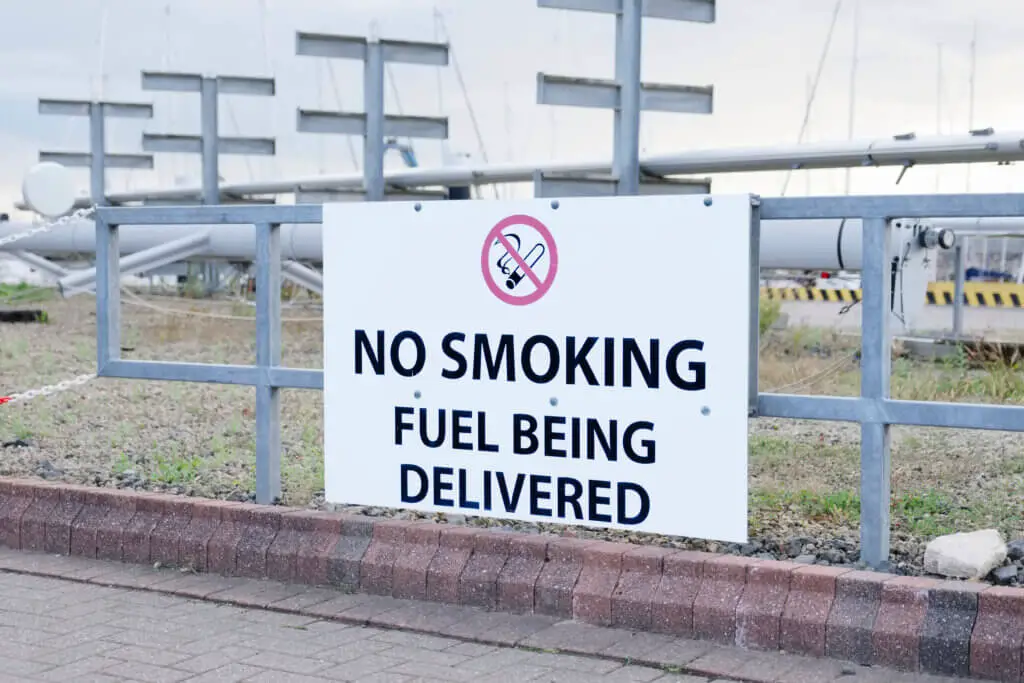The DOT physical is a series of medical checks done on drivers that move vehicles carrying more than eight people at a time or moving thousands of pounds of haulage. The Federal Motor Carrier Safety Administration (FMCSA) requires that several medical tests are done on drivers before being allowed to drive on interstate highways.
One such test is the blood pressure check. A driver’s blood pressure must be within a very good range. Anything on the extremities could not only potentially cause harm to the driver, but also to other road users. Persistently high blood pressure is the bedrock for many other health issues that could be sudden and catastrophic.
BP: What Do the Figures Mean?

For simplicity, two figures are given as your blood pressure reading when done. The first number is the systolic, which measures the pressure your blood exerts on your vessels when the heart pumps out blood.
The second number is the diastolic, which measures blood pressure when the heart is relaxed, that is, between two intermittent pumps of blood. They are measured in the unit of pressure measurement, mmHg.
The Observable Blood Pressure Categories.
Blood pressure can range from far less than 120/80 mmHg to over 180/120 mmHg. As such, they have been grouped into the following.
1. Normal blood pressure
This is a blood pressure of 120mmHg systolic and 80mmHg diastolic. This is the optimal range that the body requires to function well.
2. Pre-hypertensive stage
This is when the systolic blood pressure is between 120 to 129mmHg and the diastolic reading is below 80mmHg. Simple lifestyle changes can help return the blood pressure back to normal.
3. Stage 1 hypertension
This is a systolic pressure between 130 to 139mmHg and a diastolic pressure between 80 and 90mmHg.
4. Stage 2 hypertension
This is a systolic reading of 140mmHg or more and a diastolic pressure of 90mmHg and more. Beyond normal lifestyle changes, medications to lower the pressure must be given at this stage.
5. Hypertension
This is a blood pressure reading of 180/120mmHg and more. When this is discovered, especially along with other symptoms such as blurred vision, drowsiness, and difficulty with breathing, seek help immediately.
What To Do To Lower Your Blood Pressure Long Before Taking Your Dot Physical.
It is best to start working towards achieving your blood pressure goal long before the time for the tests. This can help maintain an optimal blood pressure level for sustainable periods.
● Exercise very regularly.
The body needs regular physical activity to keep it working optimally. A 15-minute workout daily that includes a minute or two of intensive phase can help achieve the desired results. Exercising also helps you burn out unwanted calories in the body and keeps you fitter.
● Avoid alcohol, nicotine, caffeine, and other related substances.
The intake of these can increase your heart beat rate extensively, which could culminate in elevated blood pressure. Alcohol can also adversely damage other organs, such as the kidneys and liver, the abnormal function of which can, in turn, cause irregularities in blood pressure.
● Eat plenty of fruits and vegetables.
These are stacked with essential nutrients and elements that help to keep your body functioning properly. Always remember that overall body health affects your blood pressure level.
● Get plenty of sleep.
Sleep is a very good regulator of the body. This is how the body heals itself from the effect of strenuous activities it has been involved in daily. Getting up to 7 or 8 hours of sleep daily is advisable to stay in good health.
● Meditation also helps reduce the effect of stress.
Your mental health too can have a direct impact on your blood pressure. When the body feels stressed, it releases certain stress hormones, such as adrenaline and cortisol, which increase blood pressure.
What To Do To Lower Your Blood Pressure Just Before Taking Your DOT Physical.
If you’re about to take your physical and need some quick blood pressure-lowering hacks, these ones are for you. However, If you want guaranteed results, they only come from long-term efforts and not quick fixes.
That said, here are some tips to help you lower your blood pressure just before taking your DOT physical.
● Drink enough water.
Plenty of water in the body can help flush out sodium electrolytes that are responsible for increasing blood pressure. You can take plenty of water just before the test to achieve a temporary result. However, drinking about 3 liters of water daily is good for the body. Water helps flush out harmful substances in the body. It also helps keep the body hydrated.
● Eat potassium-rich fruits and vegetables like bananas, melons, and spinach.
Potassium electrolytes help to negate the effects of sodium electrolytes that contribute to increased blood pressure. You will also benefit greatly from the micronutrient supply of these fruits and vegetables.
● Avoid eating junk before your DOT physical.
Taking in too many calories can exert excessive pressure on the body’s metabolic activities as it would need to break down the sugars and fatty acids. This can, in turn, lead to increased blood pressure readings.
● Avoid smoking before the test.

It is also important to avoid smoking in its entirety before the tests. Smoking decreases the level of oxygen in your bloodstream. Reduced oxygen levels in the blood mean the heart needs to work more intensively. This is a prerequisite to increased blood pressure.
● Sit comfortably during the test.
When taking your test, make sure you are very comfortably seated. Rest your back well on the chairs, spread your legs out, and maintain complete feet contact with the floor. Also, place your stretched arm comfortably on a slightly elevated surface or a table. Doing these will help keep your body relaxed. You do not want to obstruct the free flow of blood in any part of your body while taking the test, as it could alter your blood pressure reading.
● Keep warm.
Maintain a warm temperature before taking your test. Cold temperature naturally constricts the vessels in which blood flow. Imagine that the same amount of water is to pass through a smaller pipe. The implication is an increase in force by which the water jets out from an open end. The same applies to your blood vessels. Although it is a natural survival mechanism for the body to act this way, it could alter your results when taking your DOT physical.
● Breathe properly.
Ensure that you can breathe properly when taking the test. Holding your breath while taking the test will surely raise your blood pressure level. In addition, do not engage in too much talking while on the test. This has been shown to also slightly raise blood pressure readings. Again, remember that a very relaxed body and good body composure can help you record a lower blood pressure reading.
FAQs
Here are answers to some of the most frequently asked questions about lowering blood pressure for a DOT physical:
Can I still drive with high blood pressure?
Yes. You can still be medically certified to drive if your blood pressure is 140/90mmHg or more. However, you must lower it below this level to retain your certification.
How frequently do I need to be certified?
Usually, drivers with normal blood pressure are required to test once every two years. Drivers with high blood pressure who have been medically certified must recertify once every year.
What can I do to reverse high blood pressure?
Close adherence to healthy lifestyle living can help reduce your blood pressure level. In some other cases, this will be accompanied by using blood pressure medications prescribed by your physician.
What can I do if I am discovered to be hypertensive?
Please call the emergency lines as soon as possible. You will need to be gotten to the hospital, where they will pay close attention to it. Usually, this will require that you are admitted and monitored for some time until the blood pressure is substantially lowered.
